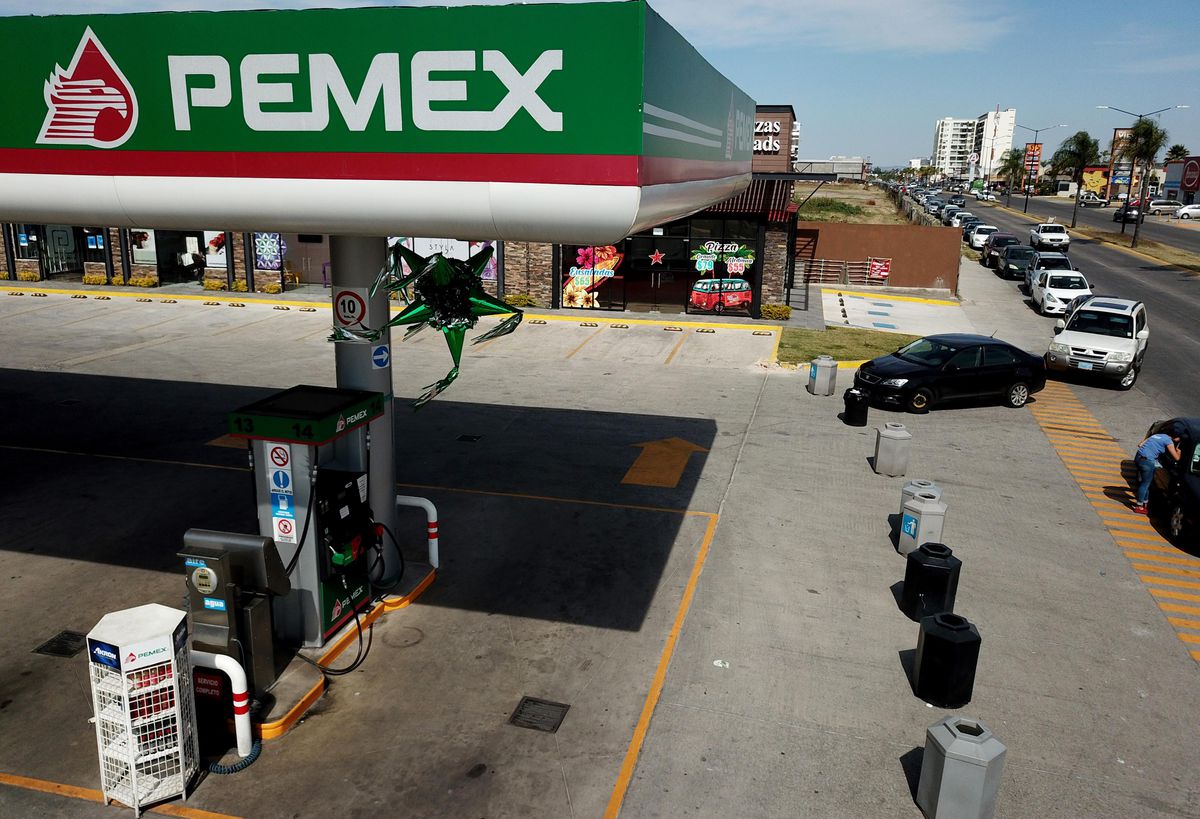There are experiences in Mexico’s history (and certainly other countries’) that serve as painful reminders that building an economy highly dependent on hydrocarbons is not, in the long term, the cleverest of decisions.

Source: Reuters
The oil boom in the 1970s and early 1980s and the resulting social and economic crisis left policymakers with valuable lessons that, considering today’s conversation around the role of the oil industry in Mexico, should not be overlooked.
Back then, bounty hydrocarbons resources encouraged a nationalist government to bet on the development and expansion of the oil industry. Doing so seemed like a logical step since many believed that resource-based growth was the path to prosperity. Mexico’s economic growth rate, which averaged 8.4 percent between 1978 and 1981, helped sustain that argument.
But policy mismanagement, a growing U.S. dollar-denominated external debt, unfavorable international conditions (higher interest rates and lower oil prices) and a short-term vision sent Mexico’s economy into a tailspin in 1982. By then, the country’s economy revolved around a single commodity. Oil exports accounted for 77.6 percent of total exports, up from 15.4 percent in 1976, while economic growth dropped to -0.6 percent.
It soon became clear that hydrocarbon wealth could not prevent economic downfall and was not enough to improve standards of living during the rest of the decade.
Fast forward to 2020 and it is hard not to see certain resemblance between Mexico’s current policy and the hydrocarbon-heavy approach that prevailed in the late 70s and early 80s. Only on this occasion, Mexico’s proved oil reserves are decimated and Pemex, the NOC holding most of those reserves, turned into a cash-burning rather than cash-making machine. In 2019 Pemex lost $36 billion and the outlook for its 2020 balance sheet looks even gloomier owed to the Covid-19 pandemic and lower oil prices.
It has been almost 20 months into the administration of López Obrador (also known as AMLO) and, despite all sort of challenges, his policy to turn Pemex into the backbone of Mexico’s hydrocarbon sector remains unmoved. An obvious policy objective for a left wing government, if not for the fact that the rapidly deteriorating economic environment has led to mounting discontentment at home and abroad as López Obrador sidelines private investment.
Local industry associations like the Business Coordinating Council (CCE) have voiced their concerns about how AMLO’s energy policies discourage private investment. In the U.S., the American Petroleum Institute (API) and the American Fuel and Petrochemical Manufacturers (AFPM) appear to share the worry as, ahead of López Obrador’s official visit to Washington on July 8-9, both groups reached out to the Trump administration to express their discomfort with Mexico’s energy policies.
As if past experiences did not teach Mexico anything, its government hopes to accomplish its economic goals based on a state-led hydrocarbon-heavy strategy. And against all evidence, President Andrés Manuel López Obrador seems convinced that his energy program can help Mexico cruise towards a much-needed prosperous future. What López Obrador seems to underestimate is that today’s economic environment is far more complex and Pemex, the instrument to surmount it, is weaker than ever.
Today’s world energy markets are navigating uncharted territories. The outbreak of Covid-19 has forced hundreds of millions, if not billions, of individuals to confinement, slashing oil global demand as a result. And this, along with a global oil supply glut, has led to lower oil prices that are hitting Pemex hard. Mexico, a country with a diversified economic base but with public finances upsettingly reliant on oil revenues, is projected by the International Monetary Fund to experience an economic contraction of around 10.5 percent in 2020.
As it currently stands, Pemex is ill-equipped to spearhead Mexico’s economic recovery once the lockdown comes to a complete end. The company’s debt of $105.2 billion and labor obligations of $77.3 billion as of December 2019 expose a more labor intensive model than more profitable international oil competitors. Falling production, operating and managing deficiencies and recent credit downgrades signal that Pemex could face serious obstacles to becoming the country’s economic engine, particularly at the era of low oil prices.
Hence, to craft a convincing plan to help restore Mexico’s economy, the time has come to acknowledge that there is much more to Mexico’s hydrocarbon sector than Pemex and that private investment could play an important role as it can develop projects in areas where Pemex has shown no real interest in participating.
The recent visit of López Obrador to Washington fueled speculation about AMLO possibly winding down his nationalistic stance on energy issues. At the White House dinner hosted by President Trump, which was attended by business executives, including those of Sempra Energy SRE -1% and Shell (both firms with several important projects in Mexico), López Obrador was reported as saying that “we are in the best disposition to favor your investments in Mexico”.
But considering his usual rhetoric, the question is whether López Obrador will eventually recognize that a sounder economic rebound in 2021 and beyond is more likely to be accomplished with private investment instead of only relying on public spending. The challenging conditions Mexico is confronting today demands boosting other critical activities of both the energy sector (renewables, transport and storage infrastructure) and the broader economy (consumer goods, manufacturing, services, infrastructure). The sooner López Obrador understands the risks associated with building an energy sector dependent on Pemex, the better.

